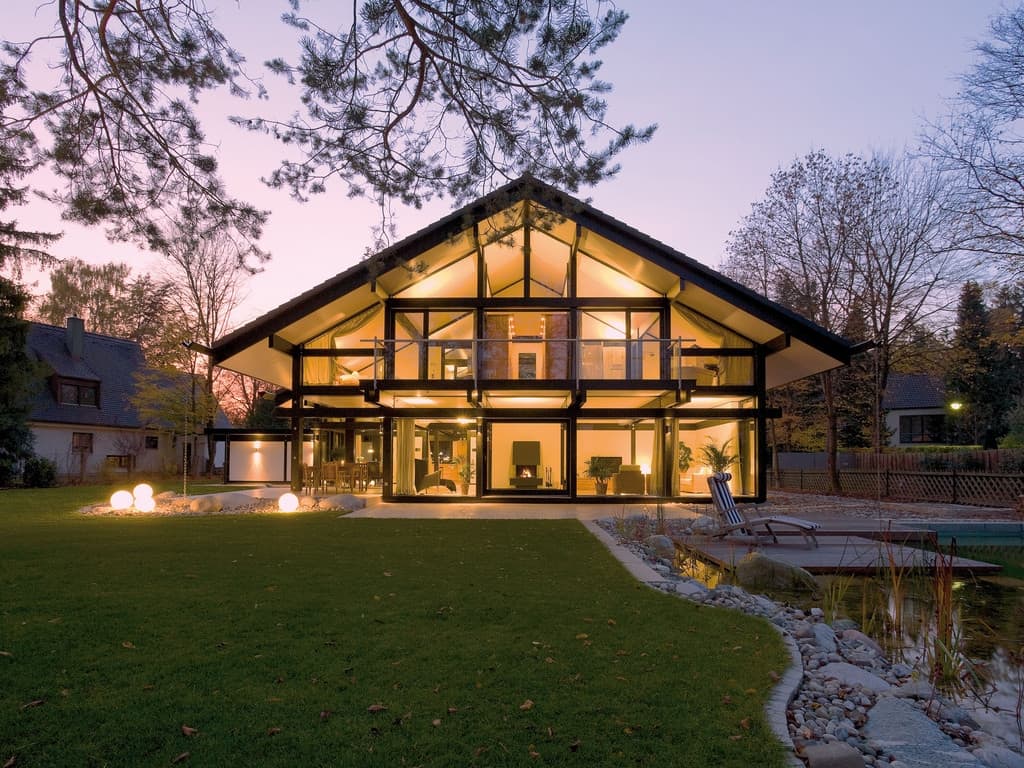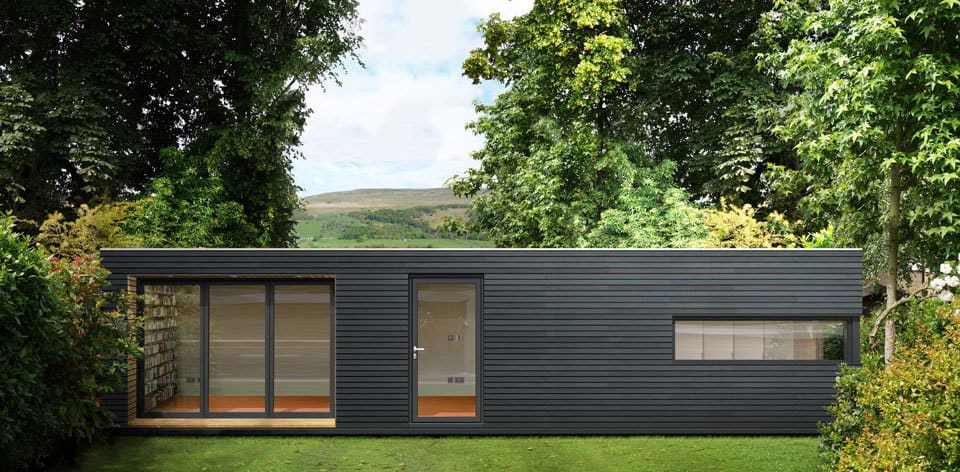What’s the difference between modular, prefab and kit homes?
If you are a novice self-builder, It’s easy to become overwhelmed with all of the industry jargon out there. ‘prefab homes’, ‘modular homes’, ‘kit houses’, ‘manufactured homes’ (etc…) are sometimes used interchangeably. However, there are subtle but important differences, and it will be critical to understand them in order to decide which construction route suits you best.
Modern Methods of Construction (MMC)
This is an industry buzz term that essentially means using new technology and innovation to make the construction process and end product more efficient and/or reduce waste. It encompasses a number of different methods, but the majority of them are centred around off-site construction (prefabrication).
Prefab
Prefab or ‘pre-fabrication’ is umbrella term for everything else mentioned below. It is also sometimes called ‘off-site’ construction, where significant elements of the building are constructed off-site (usually in a warehouse or factory environment) and transported to site in sections or modules.
Advantages of prefabrication in house construction:
- It speeds up the construction process (reducing labour costs);
- Building work is less affected by weather delays;
- There is higher quality control and precision through mechanisation and being in a factory environment…;
- and therefore less wastage of materials;
- Finally there is greater time and cost certainty throughout the construction process.
Disadvantages of prefabrication in house construction:
- You will be limited to certain materials and structures;
- The more comprehensive the prefabrication route, the less flexibility there will be in the design; e.g. most kit house companies offer a very limited number of design possibilities due to their need to keep costs down by using mass/repetitive manufacturing processes.
- It’s much more difficult to change your mind during the course of the project;
- It tends to be more expensive overall. However, as mentioned above there is most cost certainty so less risk of costly mistakes/problems during the course of the project.
Here are the main types of prefabrication below, ranging from the least to the most comprehensive. On the whole, the advantages and disadvantages become more pronounced as you go down the list.
Sub-assemblies and components
This is also a catch-all term but you could think of it as the most flexible, light-touch version of prefabrication in comparison to the more rigorous versions below. You might decide that it makes good sense for certain elements of the building to be factory-made. This is common for timber-frame construction where sections of the wall, floor or roof structure are measured cut and pre-assembled and delivered flat-packed.
Prefab panel systems
Structural Insulated Panels (or SIPS) are a rigid build system incorporating insulation. These large panels are pre-fabricated and quickly slotted together on-site. Here is Kingspan’s video of their own SIPs product:
If you’re interested in using SIPs in your extension or new build project, we have written a full article on the subject here: Are SIPs right for your self-build
Modular homes / modular construction
When people talk about modular homes they are usually referring to volumetric elements that are constructed in a factory and craned into place on site. The obvious drawback to this approach is the cost of storage and transportation. So to make it worthwhile, modular off-site construction goes beyond just the structure as the advantage of constructing in a factory is the precision, speed and quality in the finer details. Bathroom pods are an example of modular off-site construction, where all of the finishes, fittings and services are installed in the factory and simple brought to site, positioned and connected to services.
Kit-houses
Kit homes are entire flat-packed houses, ready to be assembled at lightning speed on site.
Most people think of that Grand Designs episode with the German Huf Haus. Compared with other episodes, these clients appeared to have a stress free time; it was delivered on time, on budget and was engineered to the highest quality – no wonder it piqued the interest of other budding home builders.
A Huf Haus below from https://www.huf-haus.com/uk/

However for some, it’s too much of a compromise. One of the biggest attractions of self-building is to have a bespoke design, that exactly suits your needs and tastes. Your own design stamp is somewhat missing with a kit house. Also the cost, even with the benefit of cost-certainty, is usually notably higher than a traditional build.
Other kit-house companies include Baufritz and Hanse Haus.
Manufactured homes
This is where the whole building is fabricated off-site and craned into place. Static caravans are a common type of manufactured home.
For obvious transportation reasons, complete manufactured homes are typically very compact. This company called POD space has some nice designs and takes a modern approach to manufactured home building, specialising in garden rooms:
Pod Space – image of one of their products below

One big advantage of manufactured homes is that they can be relocated and depending on the size, use and design, it may not even require planning permission. Pod Space claims that: “We have streamlined the whole process of construction by designing our Pods so that they automatically meet planning policy ‘permitted development’. This means in most cases they do not require planning permission and helps us install your dream Pod quicker.”
Architect led or Design and Build?
This decision to go down the prefabrication route often goes hand-in-hand with the choice between a ‘design and build’ company and the traditional architect-led route. As with kit house companies, the attraction to a ‘one-stop-shop’ design and build company (whether they specialise in pre-fabrication or not) is usually down to convenience, cost certainty and time certainty
However, you may find that a balance needs to be struck between ease and speed of construction with the design outcome you are looking for in your dream custom home…
Best of both worlds?
Getting the right architect on your project is probably the most important decision you will make; not only will they help you design your dream home, they can guide you through the maze of decisions you’ll face throughout planning and construction phases of the project.
It’s important to find an architect who truly understands your requirements and aspirations to turn them into your dream home. This can be difficult with design and build companies as you will be limited to their in-house design team.
However, it is possible to hire your own architect independently initially, and then use a design and build company for the detailed design and construction phase. The design and build company can take the outline design and develop the construction details, taking ownership of the proposals for the remainder of the project. With this route you get a compromise of having the best design for your requirements, but with the time and cost certainty of a design and build company.
Finding the right architect for your prefab self-build
Here at Design for Me we specialise in matching clients with the right architect for their self-build project (and it’s free!):
- quickly see who’s interested in your job
- create a shortlist
- invite up to three for a no-obligation consultation

